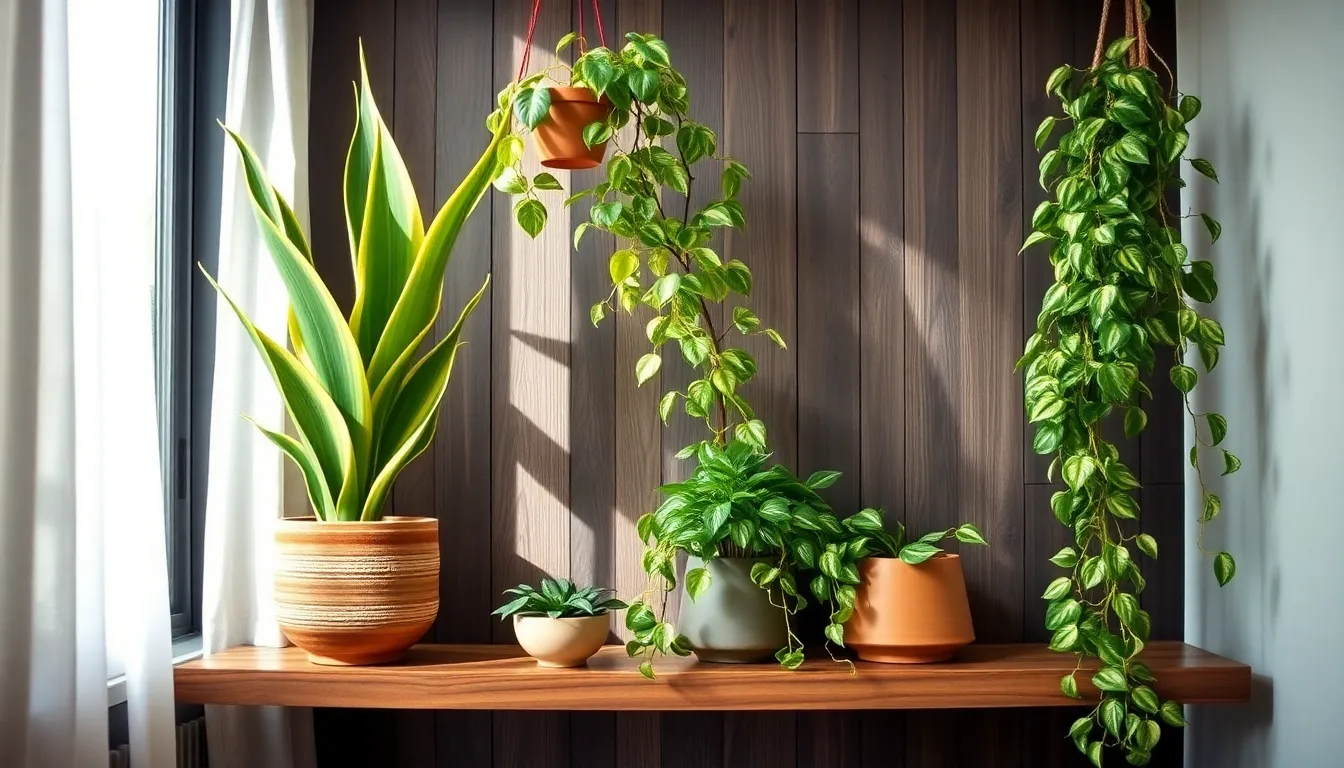Bringing the lush beauty of nature indoors can seem like a daunting task, especially if your home doesn’t bask in abundant sunlight. Yet, for those with shady corners or dimly lit rooms, there is a wonderful array of indoor plants that thrive without the need for direct sunlight, offering you the chance to create a verdant sanctuary regardless of your home’s lighting conditions. Whether you’re just starting your green journey or have already cultivated a flourishing indoor garden, the charm of low-light plants is undeniable.
For beginners, these resilient plants offer an ideal entry point into the world of indoor gardening, providing a satisfying sense of accomplishment with minimal effort. Seasoned gardeners, too, will find joy in experimenting with these adaptable species, expanding their plant repertoire and discovering new favorites. In this article, we will explore ten stunning indoor plants that not only survive but truly thrive in low light, transforming even the shadiest nooks into vibrant, living displays.
As you immerse yourself in this guide, you’ll learn about the unique characteristics of each plant, along with practical tips for care and placement. By the end, you’ll be equipped with the knowledge to select the perfect plants for your space, ensuring they flourish and add a touch of nature’s elegance to your home. Together, let’s delve into the world of low-light indoor plants and unveil the beauty that lies in the shadows.
Understanding Low-Light Plant Needs
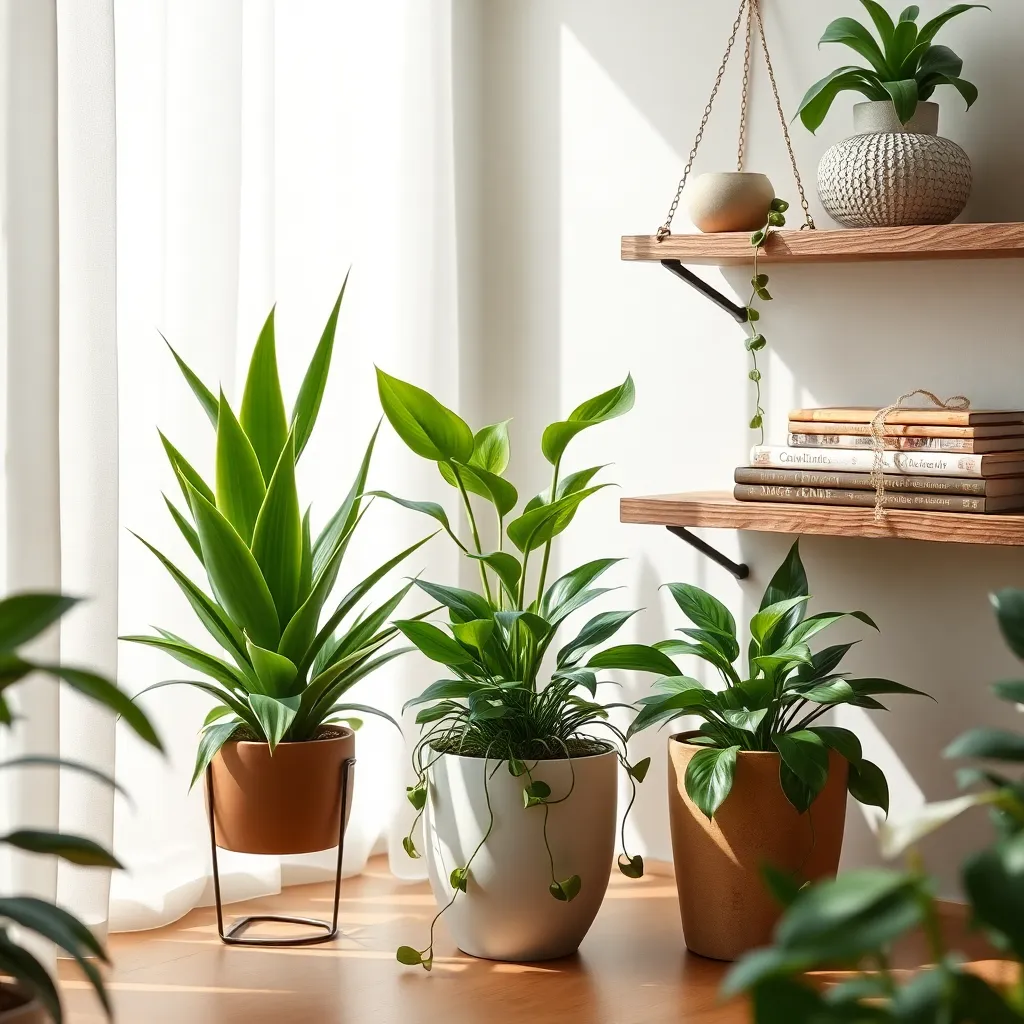
Understanding the specific needs of low-light plants can significantly improve their health and appearance. These plants have adapted to thrive in environments where sunlight is scarce, making them perfect for indoor spaces that don’t receive much direct sunlight.
To ensure the success of your low-light plants, it’s critical to choose the right species that naturally grow in shaded conditions. **Plants like the snake plant, ZZ plant, and pothos are excellent choices** because they can tolerate lower light levels while still adding greenery to your home.
When it comes to soil, low-light plants generally prefer a well-draining mix to prevent root rot. **A combination of potting soil, perlite, and a bit of sand** can provide the ideal environment for these plants to thrive.
Watering is another key aspect to consider, as overwatering is a common mistake with low-light plants. It’s best to water these plants when the top inch of soil feels dry, ensuring that the water drains well from the pot.
For more advanced care, consider rotating the plants every few weeks to ensure even growth, as they tend to lean towards the light source. **Fertilize sparingly**, about once every two months with a balanced, water-soluble fertilizer, to support their slow growth rate without overwhelming them.
Top Picks for Dim Spaces
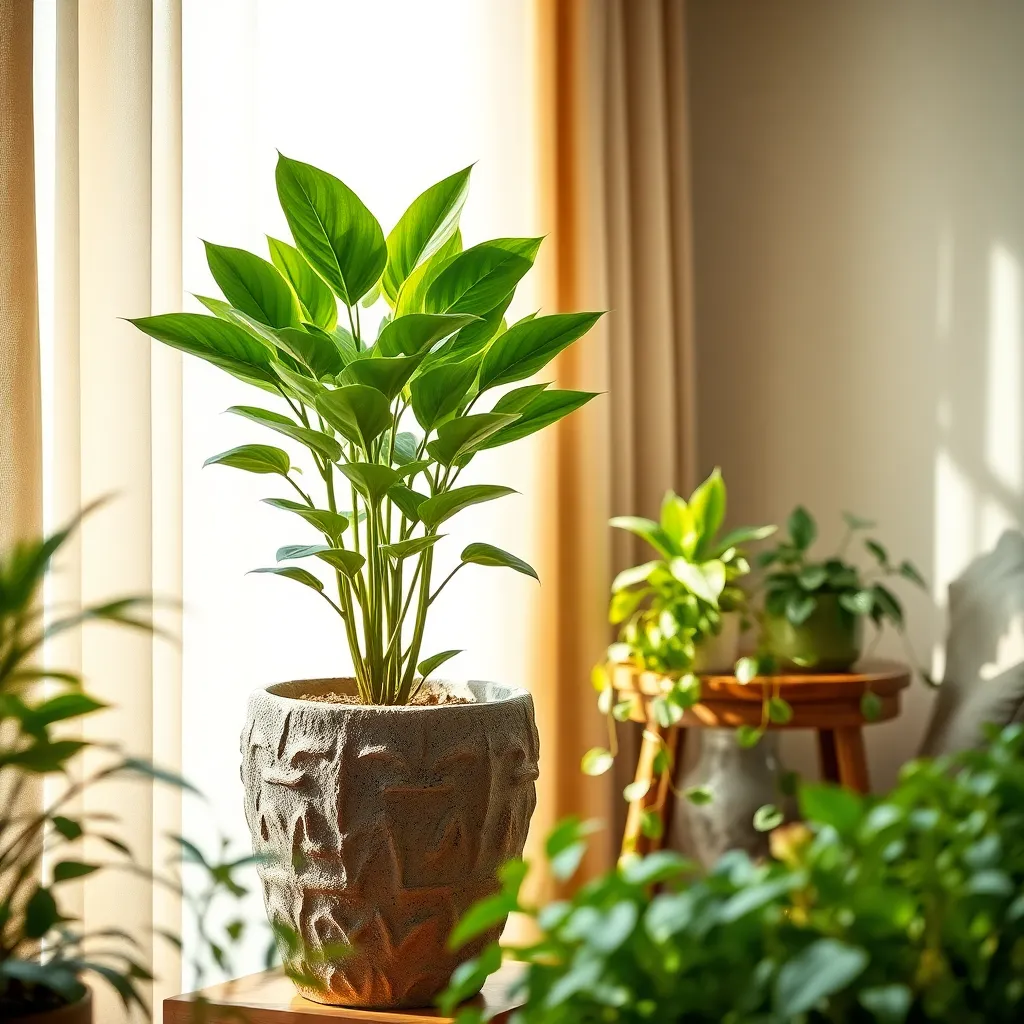
Dim spaces can still host some of the most beautiful indoor plants with the right selection. One top pick for low-light areas is the Snake Plant, known for its resilience and air-purifying abilities. It thrives in indirect light and only requires watering when the soil feels dry, typically every two to three weeks.
Pothos is another excellent choice for dim spaces, offering vibrant green leaves that cascade beautifully from their pots. This plant is incredibly forgiving and can adapt to a variety of lighting conditions, making it ideal for beginners. Water it when the top inch of soil is dry, and it will continue to flourish with minimal care.
The ZZ Plant, with its glossy leaves, is perfect for adding a touch of elegance to any poorly lit room. It is drought-tolerant and can survive on infrequent watering, making it a great option for those with busy lifestyles. For the best results, use well-draining soil and allow the soil to dry out completely between waterings.
Finally, consider incorporating a Peace Lily into your dimly lit space, as it is both beautiful and functional. It not only brightens up the area with its striking white blooms but also helps purify the air. Peace Lilies prefer consistently moist soil, so aim to water them once a week or when the leaves start to droop slightly.
Care Tips for Peace Lily
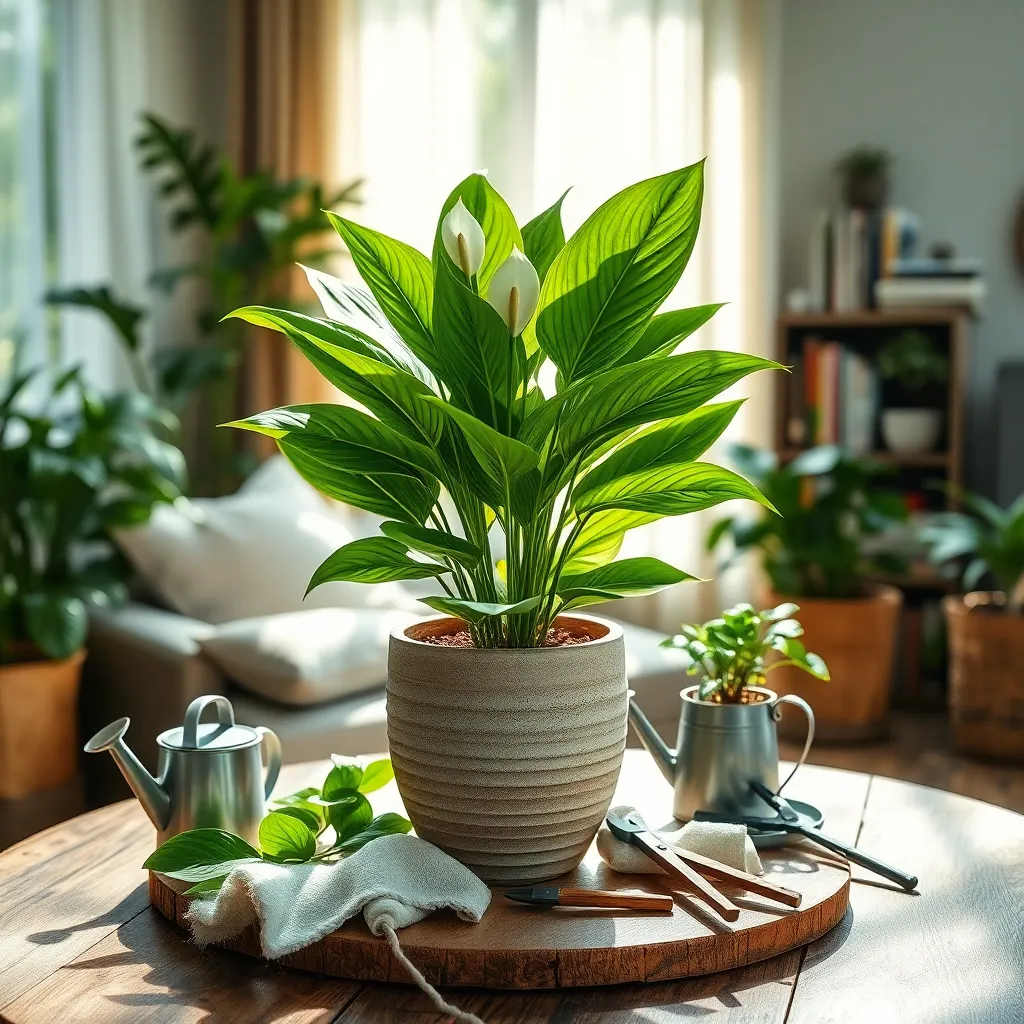
Peace lilies are perfect for low-light areas, making them an ideal choice for indoor spaces. To keep your peace lily thriving, place it in a spot that receives indirect sunlight, as direct exposure can scorch its leaves.
Watering your peace lily correctly is key to its health. Aim to keep the soil slightly moist, watering thoroughly when the top inch of soil feels dry to the touch.
Using the right soil mix is essential for optimal growth. A well-draining potting mix, such as one containing peat moss and perlite, is highly recommended to prevent root rot.
Fertilizing is important for peace lilies, but it should be done sparingly. During the growing season, apply a balanced, water-soluble fertilizer every 6-8 weeks for lush foliage.
For more advanced care, consider regularly wiping the leaves with a damp cloth. This practice keeps the leaves dust-free and allows the plant to absorb more light and breathe better.
Snake Plant: A Hardy Choice
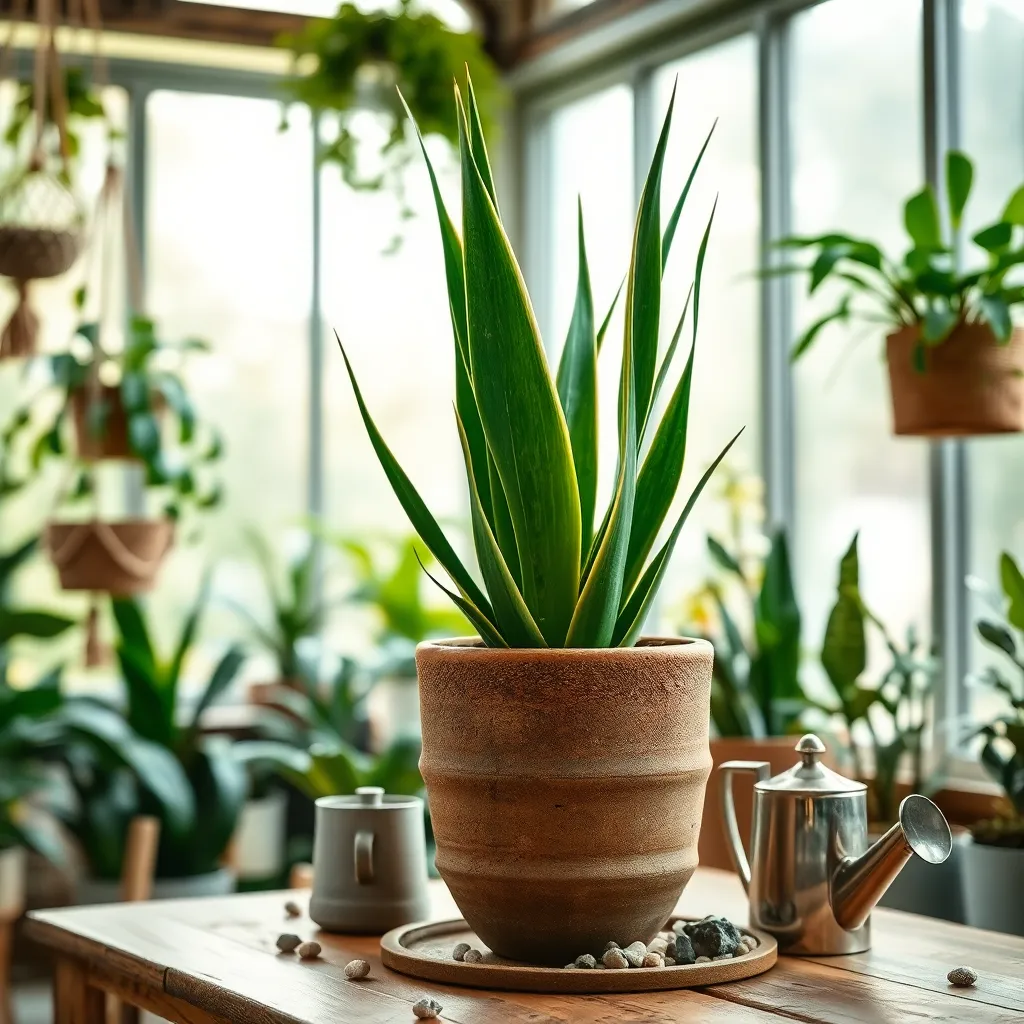
The snake plant, also known as Sansevieria or mother-in-law’s tongue, is renowned for its resilience and ability to thrive in low-light conditions. This makes it an ideal choice for those who are new to indoor gardening or who have less access to natural sunlight.
To ensure your snake plant thrives, choose a well-draining potting mix, such as a cactus or succulent blend. These plants are prone to root rot if overwatered, so it’s crucial to let the soil dry out completely between waterings.
Position your snake plant in a spot that receives indirect sunlight, as direct sun can scorch its leaves. If natural light is scarce, the plant will still manage well under fluorescent lighting, making it perfect for offices and dim apartments.
For those seeking a bit of a challenge, propagate your snake plant by dividing the rhizomes during repotting. This not only helps control the size of the plant but also allows you to share its beauty with friends or expand your collection.
ZZ Plant: Minimal Maintenance
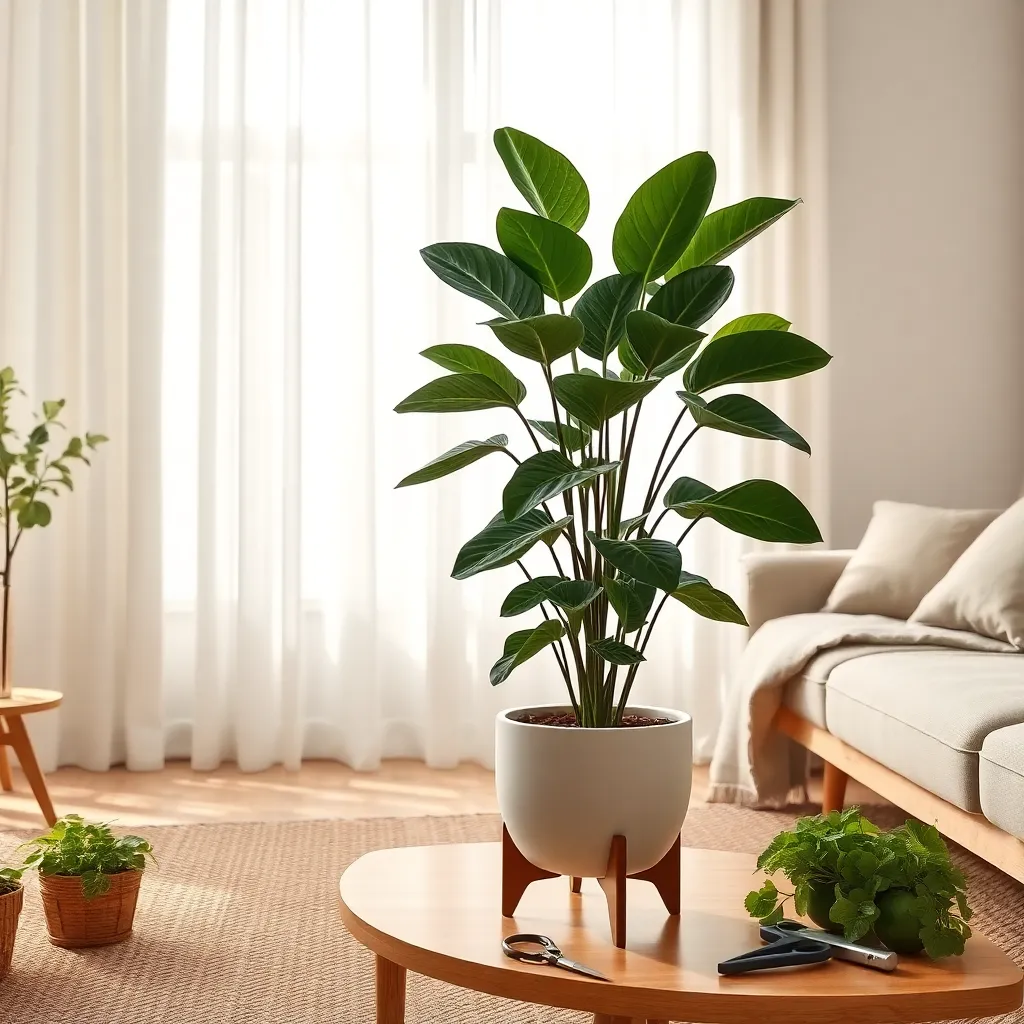
The ZZ Plant, known for its striking glossy leaves, is a perfect choice for those seeking a low-maintenance indoor plant. It thrives in low-light conditions, making it ideal for offices or rooms with minimal sunlight.
When it comes to watering, this plant is very forgiving; it prefers to be on the drier side. Water your ZZ Plant only when the top inch of soil feels dry to the touch, usually every 2-3 weeks.
Utilize a well-draining potting mix to prevent root rot, a common issue for overwatered plants. A blend of regular potting soil with added perlite or coarse sand works well to improve drainage.
For those looking to enhance growth, consider fertilizing your ZZ Plant during the growing season. Apply a balanced, water-soluble fertilizer monthly in spring and summer to support its health and vitality.
Thriving with Pothos Varieties
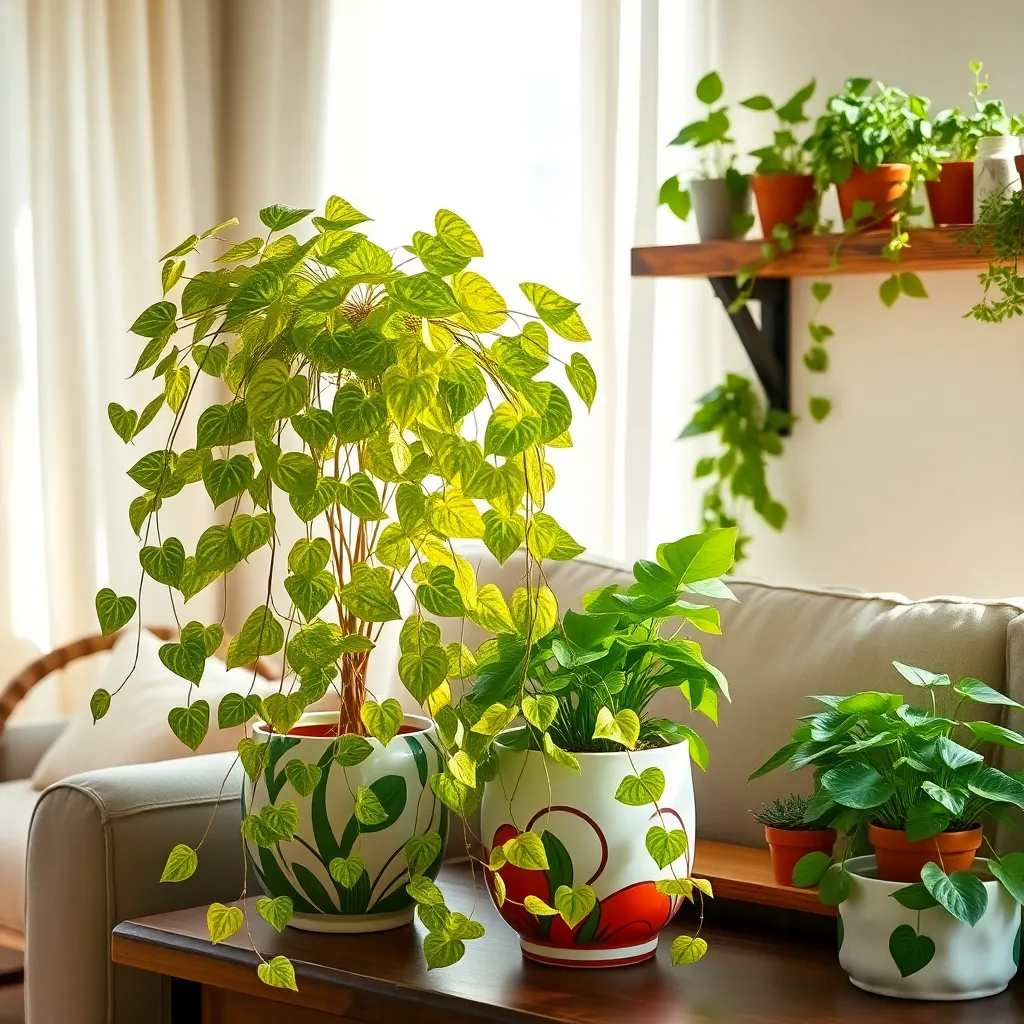
Pothos varieties are among the most adaptable houseplants, thriving even in low-light conditions. Golden Pothos and Marble Queen Pothos are particularly popular for their stunning leaf patterns and ease of care.
These plants prefer well-draining potting soil, ideally a mix of peat moss and perlite, to ensure optimal root health. Water your Pothos when the top inch of soil feels dry, typically every 1 to 2 weeks, to prevent root rot.
While they tolerate low light, Pothos plants will grow more vigorously in bright, indirect light. If you notice the leaves becoming pale, consider moving the plant closer to a window for better growth.
For advanced care, occasionally feed your Pothos with a balanced liquid fertilizer during the growing season. Pruning the stems will not only keep the plant bushy but also allows you to propagate new plants from cuttings.
Philodendron: Perfect for Shade
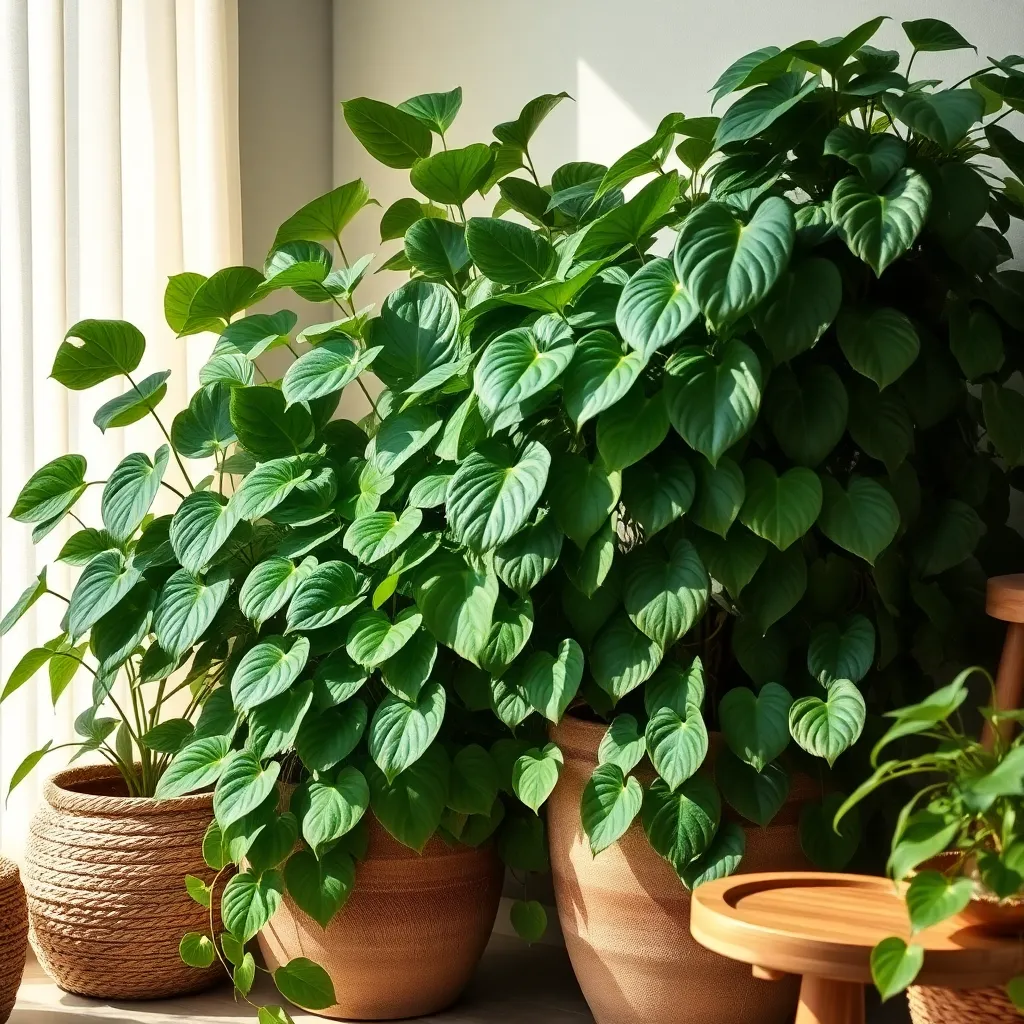
Philodendrons are an excellent choice for indoor gardeners seeking plants that thrive in low-light conditions. These versatile plants adapt well to indirect light, making them perfect for shaded corners of your home.
To ensure your philodendron grows healthy, plant it in a well-draining potting mix with peat moss or perlite. Water the plant only when the top inch of soil feels dry, as philodendrons prefer slightly moist conditions without being waterlogged.
Beginners will appreciate the philodendron’s forgiving nature, as it can tolerate occasional neglect. For those looking to advance their care, consider misting the leaves regularly to maintain humidity, which these tropical plants love.
To encourage bushier growth, pinch back the stems periodically, which will promote new shoots. If you’re feeling adventurous, propagate your philodendron by cutting a stem with at least two leaves and rooting it in water or soil.
Calathea’s Unique Pattern Appeal
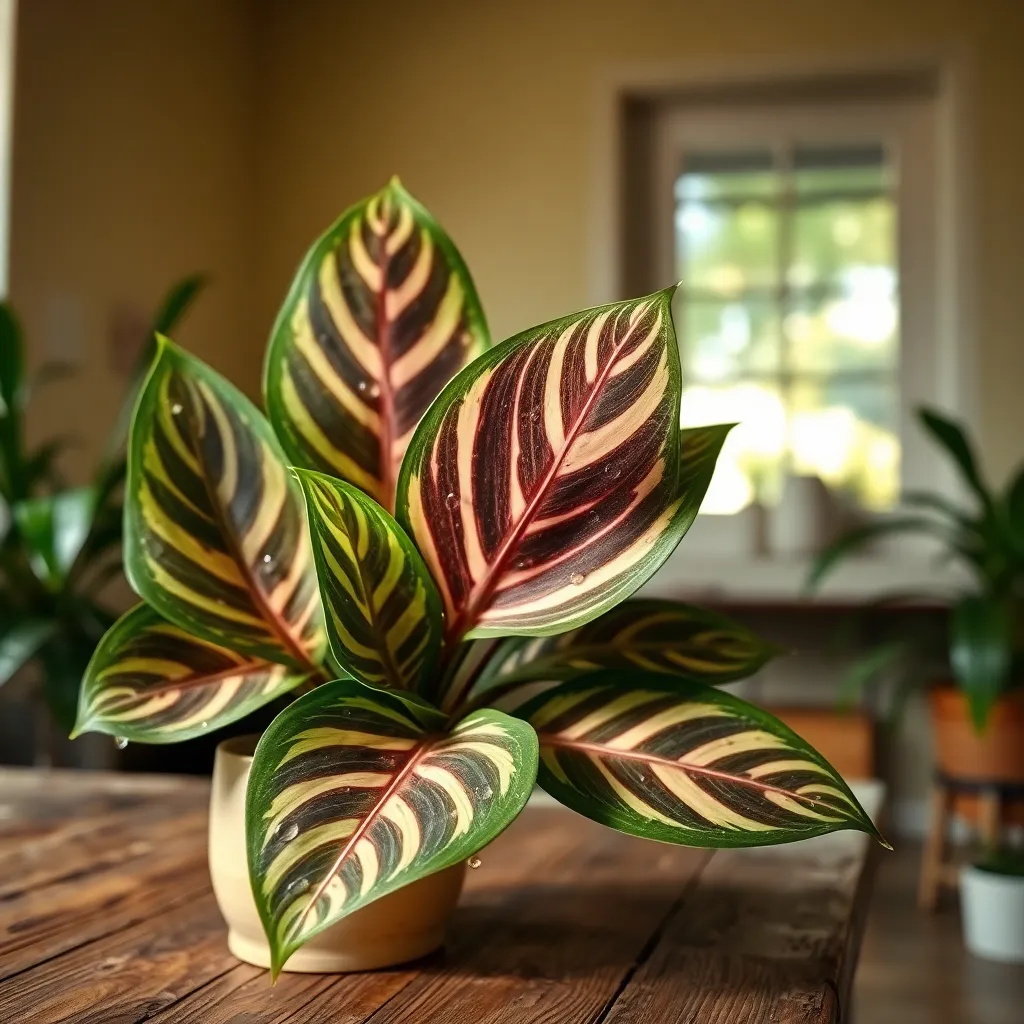
Calathea plants are known for their strikingly beautiful foliage, which features unique patterns and vibrant colors. These patterns can appear as stripes, spots, or intricate designs, making Calathea a standout choice for indoor gardeners seeking visual diversity.
One of the appealing aspects of Calathea is its ability to thrive in low-light environments. These plants prefer indirect light, which makes them perfect for rooms with limited natural sunlight or shaded areas of your home.
When it comes to watering, Calathea requires a bit of attention to detail. Keep the soil consistently moist but avoid waterlogging; using a pot with drainage holes and a well-draining potting mix helps achieve this balance.
Beginner gardeners will appreciate that Calathea doesn’t require frequent fertilization. However, for those looking to give their plants an extra boost, apply a balanced liquid fertilizer every four to six weeks during the growing season to encourage lush foliage growth.
Advanced gardeners can experiment with increasing humidity around their Calathea, as these plants are native to tropical regions. Using a pebble tray or a humidifier can enhance their environment, resulting in healthier, more vibrant leaves.
Nurturing the Chinese Evergreen
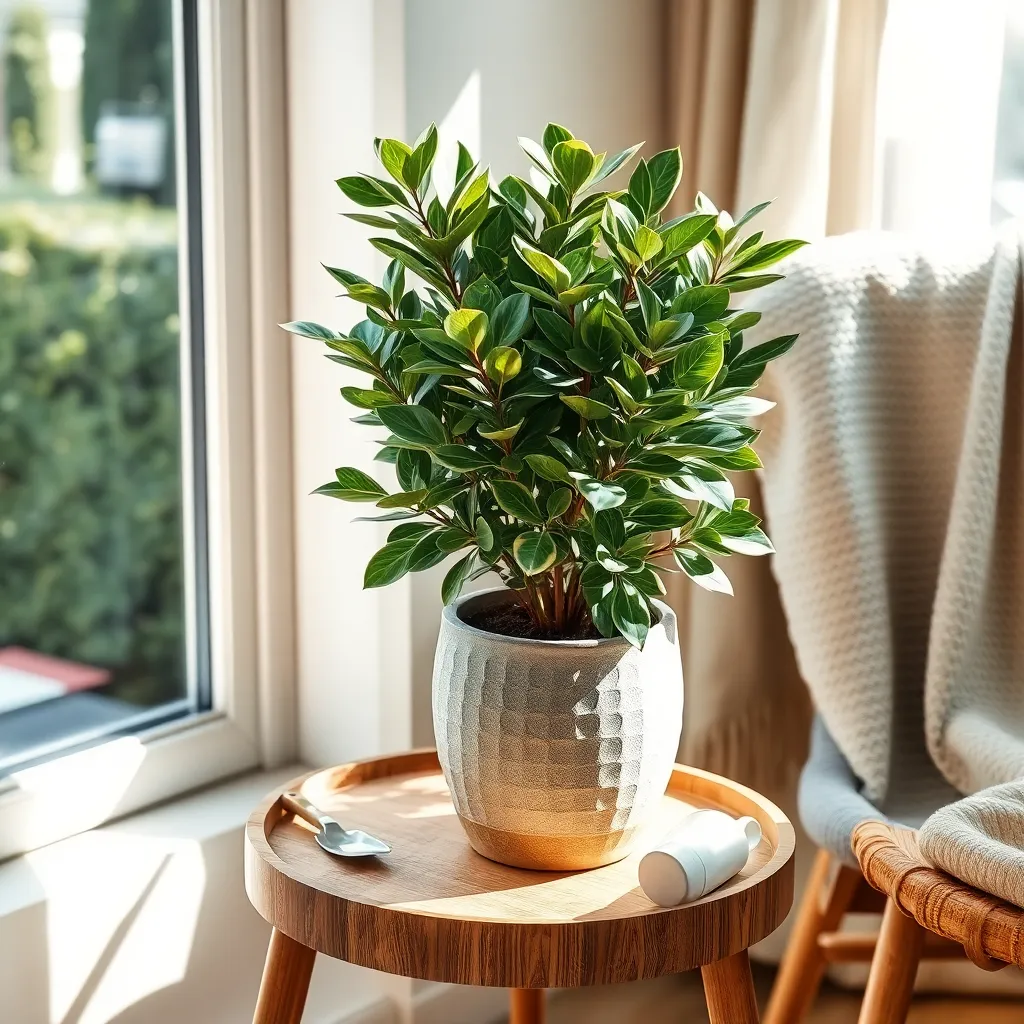
Chinese Evergreen, known for its lush foliage and adaptability, thrives in low-light conditions, making it a perfect indoor plant. Position it in an area with indirect sunlight to maintain its vibrant leaf color and healthy growth.
When potting this plant, choose a well-draining soil mix to prevent root rot. A blend of potting soil, perlite, and sand works effectively to provide the necessary aeration and drainage.
Watering should be done sparingly, allowing the top inch of soil to dry out between waterings. Over-watering can be detrimental, so always check soil moisture by inserting your finger into the soil.
For those looking to take plant care a step further, consider occasional misting to increase humidity, which Chinese Evergreen appreciates. Fertilize every two months during the growing season with a balanced, water-soluble fertilizer to support robust foliage development.
Boosting Health with Spider Plant
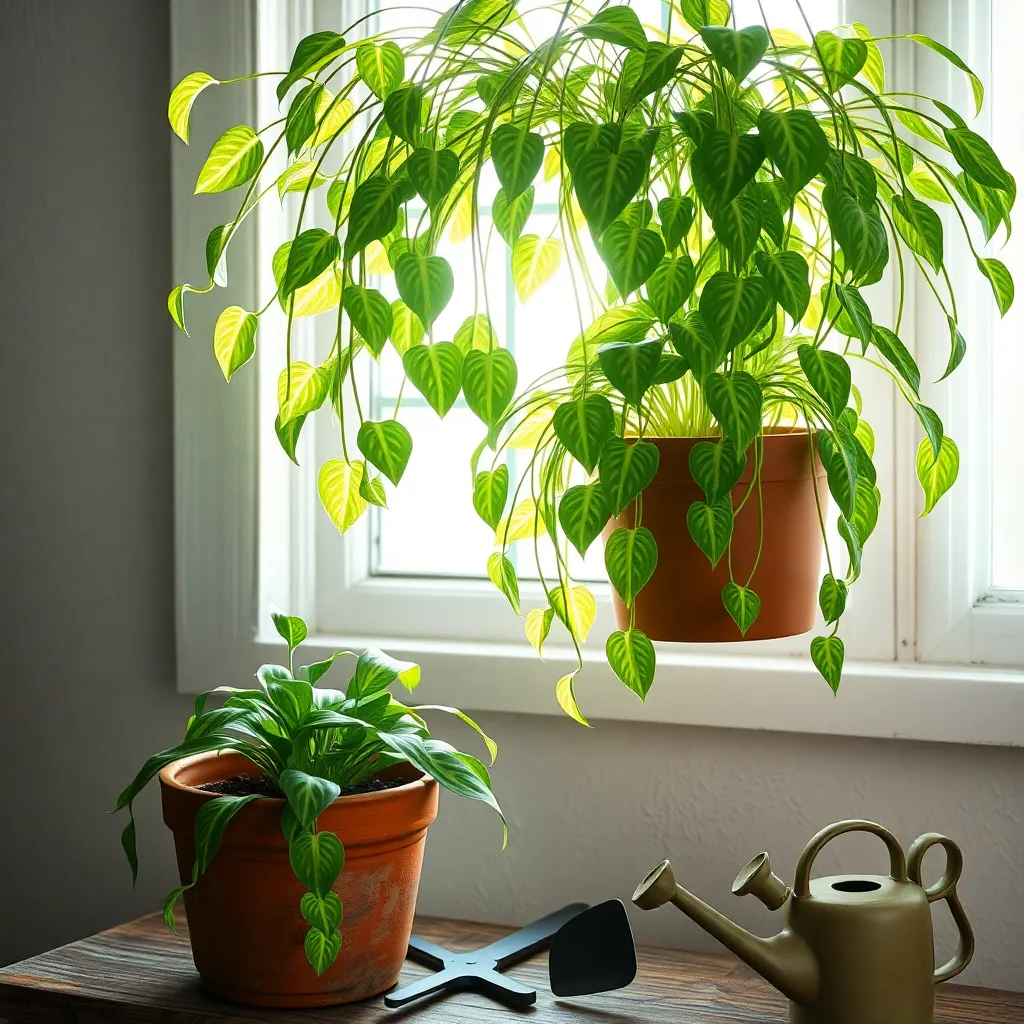
Another excellent choice for low-light environments is the Spider Plant, which is not only easy to care for but also known for its air-purifying qualities. These hardy plants can thrive in indirect light and are perfect for those who might not have a sunny windowsill.
When it comes to watering, the Spider Plant prefers to dry out slightly between waterings. A good rule of thumb is to water them every 1-2 weeks, ensuring the soil is dry to the touch about an inch below the surface before adding more water.
For soil, a well-draining potting mix is ideal to prevent root rot, which can occur if the plant is left in standing water. Mixing in a bit of sand or perlite can enhance drainage, helping the plant to stay healthy and vibrant.
To encourage lush growth, consider giving your Spider Plant a balanced liquid fertilizer every month during the growing season, which usually spans from spring to early fall. This little boost will support its development and can even lead to the production of “babies” or offshoots, which are fun and easy to propagate.
Conclusion: Growing Success with These Plants
In exploring the world of indoor plants that thrive with minimal sunlight, we’ve uncovered ten beautiful options that can enhance your living space while subtly nurturing the relationships within it. From the resilient Snake Plant to the charming Peace Lily, each plant symbolizes a unique aspect of relationships: resilience, adaptability, growth, nurturing, and tranquility. Just as these plants thrive in low-light conditions, relationships can flourish in less-than-ideal circumstances with the right care and attention.
Now, take a moment to choose one plant that resonates most with the current state of your relationship. Bring it into your home as a living reminder of your commitment to growth and connection. As you nurture this plant, let it inspire you to nurture your relationships with the same gentle care.
Remember, every relationship can benefit from consistent attention and small acts of kindness. Save or bookmark this article for future reference, so you can revisit these ideas and continue to cultivate both your home and your relationships with love and patience.
Looking ahead, embrace the journey of relationship success. With each step you take, you’re creating a foundation for enduring love and connection. Your relationships, like your plants, have the potential to thrive beautifully.

